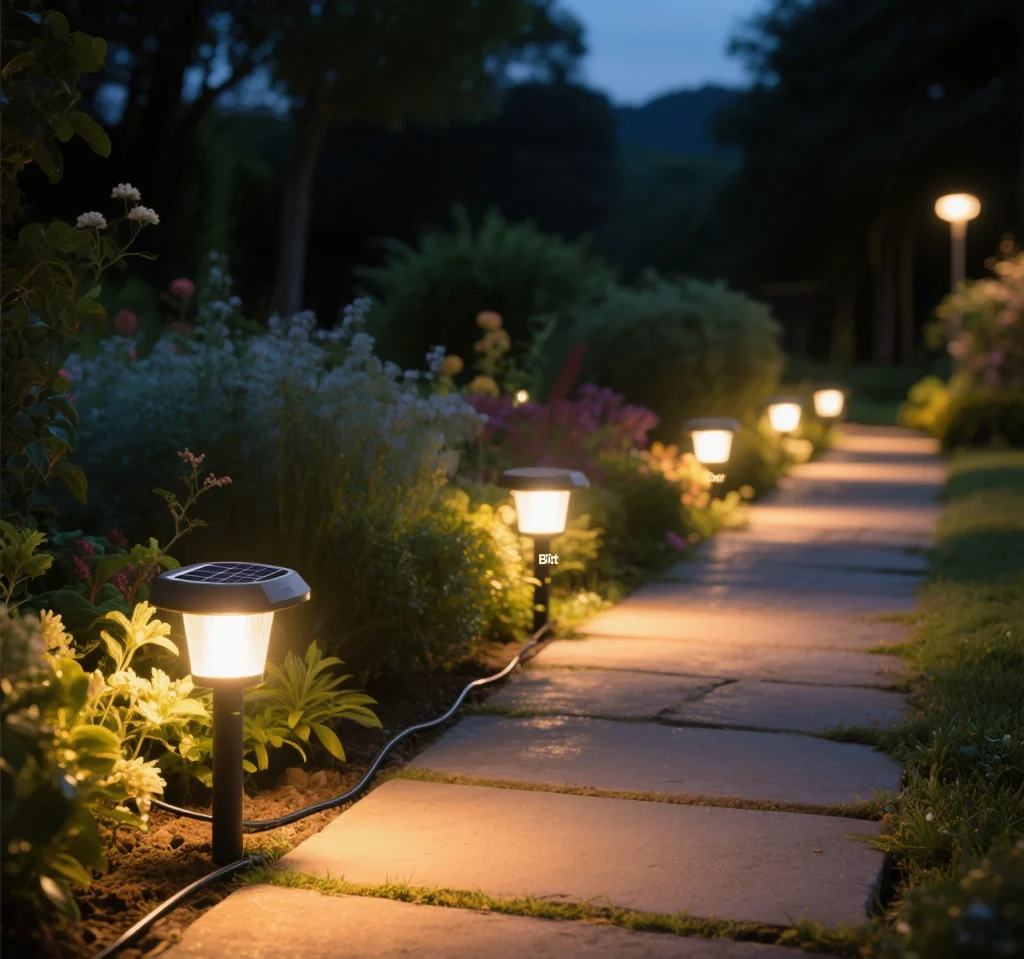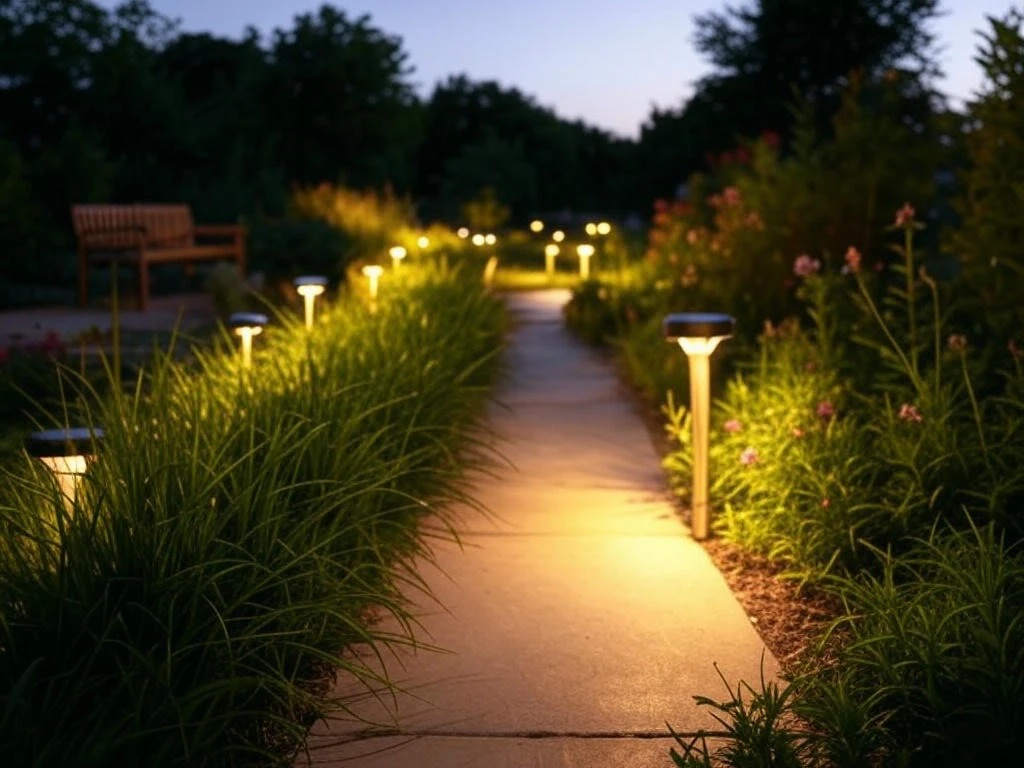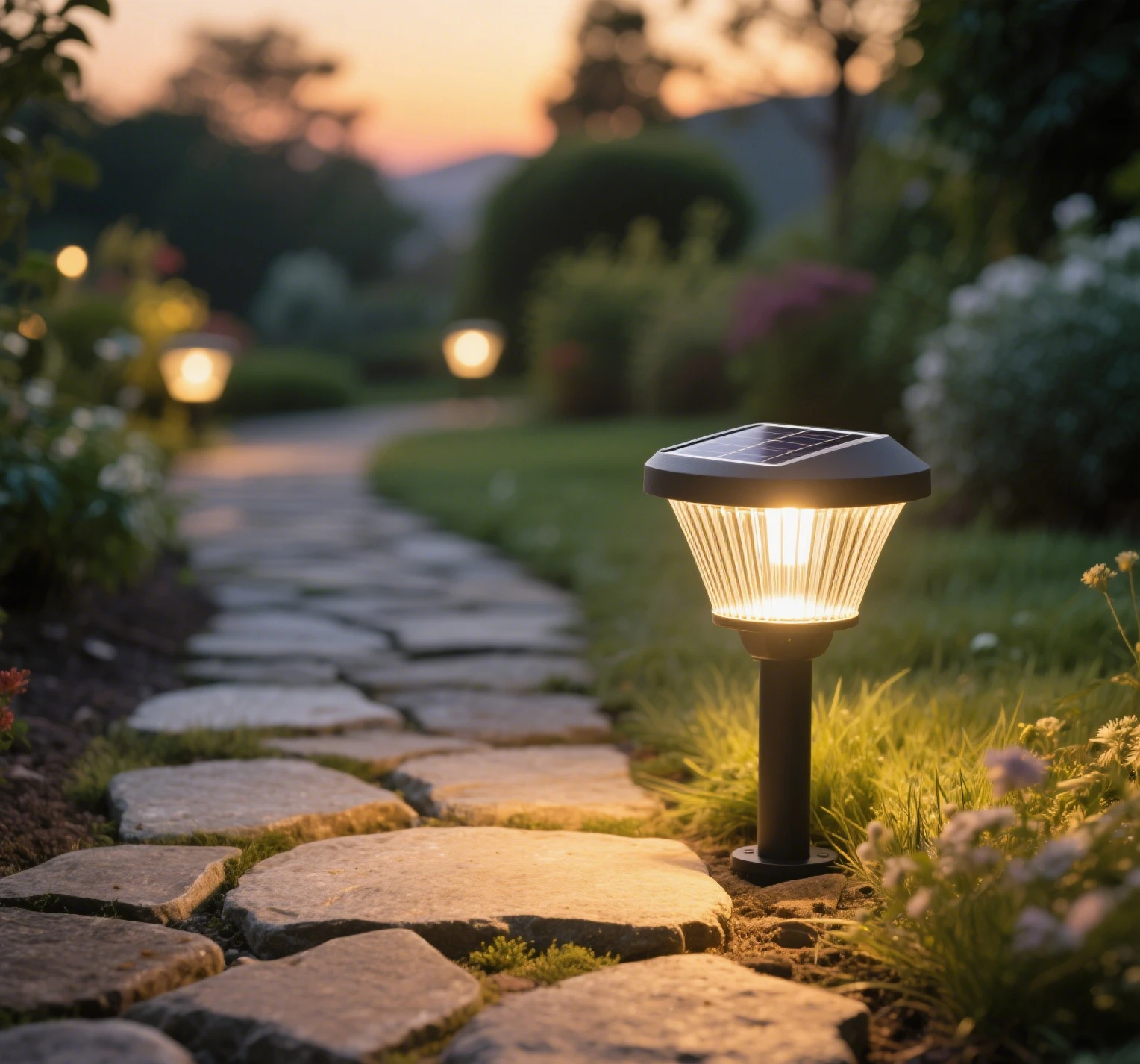Solar garden lights are a popular choice for illuminating outdoor spaces, offering an eco-friendly and cost-effective way to enhance gardens, pathways, and patios. However, many users find themselves asking, why do solar garden lights not last long? Despite their appeal, these lights often fail to meet expectations for longevity, dimming or dying out after just a season or two. This article dives into the reasons behind their limited lifespan, explores practical solutions to extend their durability, and provides unique insights to help you get the most out of your solar landscaping lights, decorative solar garden lights, and solar lights for steps.

Understanding the Components of Solar Garden Lights
To grasp why solar garden lights may not last long, it’s essential to understand their core components:
- Solar Panel: Converts sunlight into electricity using photovoltaic cells.
- Rechargeable Battery: Stores energy for nighttime use, typically nickel-metal hydride (NiMH) or lithium-ion.
- LED Bulb: Provides illumination, known for energy efficiency and brightness.
- Housing and Electronics: Protects internal components and includes sensors or controllers to manage operation.
Each component plays a critical role, but vulnerabilities in design, materials, or maintenance can shorten the lifespan of solar landscaping lights, leading to performance issues over time.
Common Reasons Solar Garden Lights Fail Prematurely
Several factors contribute to the limited lifespan of solar garden lights, ranging from environmental challenges to manufacturing choices. Below, we explore the most common culprits.
Poor-Quality Batteries
The battery is often the weakest link in solar landscaping lights. Many budget-friendly models use low-capacity NiMH batteries, which degrade after 500–1000 charge cycles (roughly 1–3 years). Exposure to extreme temperatures—hot summers or freezing winters—accelerates battery wear, reducing energy storage and dimming the light output. Lithium-ion batteries, found in higher-end decorative solar garden lights, offer better longevity but are less common in affordable models.
Inadequate Weatherproofing
Outdoor lights face harsh conditions: rain, snow, humidity, and UV exposure. Many solar lights, especially inexpensive ones, lack robust weatherproofing (e.g., IP65 or higher ratings). Water ingress can corrode circuits, while UV rays degrade plastic housing, causing cracks or clouding of the solar panel. For solar lights for steps, which are often exposed to foot traffic and moisture, poor sealing can lead to early failure.
Low-Quality Solar Panels
The solar panel’s efficiency determines how much energy is captured. Cheaper panels, often made with lower-grade photovoltaic cells, lose efficiency over time due to UV exposure or dirt accumulation. A cloudy or scratched panel reduces charging capacity, leaving decorative solar garden lights underpowered and prone to dimming or shutting off.
Environmental Factors
Placement plays a significant role in longevity. Lights installed in shaded areas, under trees, or near reflective surfaces collect less sunlight, leading to incomplete battery charging. Over time, this “undercharging” stresses the battery, shortening its lifespan. Additionally, debris like leaves or snow can block panels, further reducing efficiency, especially for solar lights for steps in high-traffic areas.
Overuse of Features
Many modern solar landscaping lights include features like motion sensors or high-brightness modes. While these enhance functionality, they can drain batteries faster, especially if the light is triggered frequently. For example, solar lights for steps with motion sensors may cycle on and off repeatedly, accelerating battery degradation if not paired with a high-capacity power source.
Strategies to Extend the Lifespan of Solar Garden Lights
While some factors are beyond your control, proactive steps can significantly improve the durability of your solar lights. Here are practical solutions tailored to address common issues.
Choose High-Quality Solar Lights
Investing in well-made solar landscaping lights can make a substantial difference. Look for models with:
- Lithium-ion Batteries: These last longer (up to 2000 cycles) and perform better in extreme temperatures than NiMH batteries.
- High IP Ratings: Choose lights with at least an IP65 rating for water and dust resistance, especially for solar lights for steps exposed to rain or snow.
- Durable Materials: Opt for stainless steel or UV-resistant polycarbonate housing over cheap plastic to withstand weathering.
Brands like AiDot or Litehouse offer decorative solar garden lights with robust construction, often lasting 5–10 years with proper care.
Regular Maintenance and Cleaning
Keeping solar panels clean is crucial for optimal performance. Dust, dirt, or snow can block up to 20% of light absorption, according to studies from the U.S. Department of Energy. Clean panels monthly with a soft cloth and mild detergent, and remove debris promptly. For solar lights for steps, check for dirt buildup from foot traffic and clean regularly to maintain brightness.
Optimize Placement for Sunlight Exposure
Place lights in areas with maximum daylight, even if it’s indirect. In the Northern Hemisphere, south-facing positions capture the most sunlight. Avoid shaded spots under trees or eaves, as these reduce charging efficiency. For decorative solar garden lights in aesthetic displays, consider using separate solar panels that can be placed in sunnier locations while keeping the light in a shaded area.
Manage Battery Health
To prolong battery life, perform “deep charging” every few months by turning off the lights for 72 hours while exposing them to sunlight. This fully charges the battery, reducing stress from partial cycles. Replace batteries every 1–2 years, especially in budget models, to maintain performance. For solar landscaping lights with replaceable batteries, this is a cost-effective way to extend lifespan.
Use Power-Saving Features Wisely
If your solar lights for steps include motion sensors or adjustable brightness, use these features strategically. Set motion sensors to activate only when needed, and choose lower brightness settings for decorative solar garden lights to conserve energy. Some models, like the 4lite Antheia, offer customizable modes to balance brightness and battery life.

Innovative Approaches to Enhance Longevity
Beyond standard maintenance, consider these unique strategies to maximize the lifespan of your solar garden lights:
Seasonal Storage
In regions with harsh winters, store solar lights indoors during off-seasons to protect them from freezing temperatures and snow. This is particularly effective for decorative solar garden lights used for seasonal displays, as it prevents battery degradation and housing damage.
Upgrade to Hybrid Models
Some modern solar lights, like the TrueFlame USB Solar Crook Lantern, offer USB charging as a backup. During prolonged cloudy periods or winter months, you can charge the battery indoors, reducing reliance on sunlight and extending usability. This is ideal for solar landscaping lights in areas with inconsistent sunlight.
Reflective Enhancements
Boost charging efficiency by placing reflective surfaces, such as aluminum foil or small mirrors, near the solar panel. These redirect diffused light, increasing energy capture in shaded or cloudy conditions. This technique works well for solar lights for steps in partially shaded areas.
Smart Integration
Some high-end solar landscaping lights integrate with smart home systems, allowing you to monitor battery levels and adjust settings remotely. For example, AiDot’s RGBW Outdoor Solar Landscape Light offers app-based controls to optimize energy use, ensuring longevity even in low-light environments.
Benefits of Investing in Durable Solar Garden Lights
Despite their challenges, high-quality solar garden lights offer significant advantages:
- Eco-Friendly: By using renewable energy, solar landscaping lights reduce electricity costs and carbon footprints.
- Versatile Aesthetics: Decorative solar garden lights enhance outdoor spaces with styles ranging from vintage lanterns to modern minimalist designs.
- Safety and Convenience: Solar lights for steps improve visibility on walkways, reducing tripping hazards without the need for complex wiring.
- Long-Term Savings: Durable models with replaceable batteries and sturdy construction provide years of reliable use, offsetting initial costs.
Addressing Common Misconceptions
Many users believe solar lights are inherently short-lived, but this isn’t always true. While budget models may fail quickly due to cheap components, well-designed solar landscaping lights can last 5–10 years with proper care. Another misconception is that solar lights only work in sunny climates. In reality, modern lights can charge with indirect light, making them viable in cloudy regions like Northern Europe, as seen with brands like Solareye.
Practical Applications for Solar Garden Lights
Solar lights are versatile, enhancing both functionality and beauty in various settings:
- Garden Pathways: Solar landscaping lights illuminate walkways, creating safe and inviting routes through gardens.
- Patio Ambiance: Decorative solar garden lights, such as string lights or lanterns, add warmth to outdoor dining areas.
- Stair and Step Safety: Solar lights for steps ensure safe navigation in low-light conditions, ideal for outdoor staircases or uneven terrain.
- Seasonal Displays: Use decorative solar garden lights for holiday or event decorations, with portable models offering flexibility.
Conclusion
The question of why do solar garden lights not last long often comes down to a combination of low-quality components, environmental challenges, and improper maintenance. By choosing high-quality solar landscaping lights, maintaining panels and batteries, and optimizing placement, you can significantly extend their lifespan. Innovative approaches, like hybrid charging or reflective enhancements, further improve performance, ensuring your decorative solar garden lights and solar lights for steps shine brightly for years. With the right strategies, solar garden lights can be a durable, eco-friendly, and stylish addition to any outdoor space, transforming your garden into a beautifully lit haven.


Leave a Reply